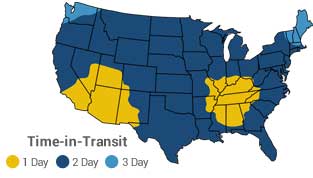Description - Looking for a versatile and durable rubber tile that’s perfect for your furry friends and high-impact workouts? Look no further than our Evolution Rubber Tiles! These tiles are the ultimate combination of toughness and comfort, making them perfect for doggie daycares and Insanity workouts alike. Plus, with their multi-nib backing, you won't have to worry about foot fatigue during your sweat sesh. But don't worry, these tiles won't make your home look like a kennel – the faux grout lines add a stylish touch to your gym. So why wait? Upgrade your workout space with our Evolution Rubber Tiles today and enjoy a 5-year warranty that will give you peace of mind for years to come.
Note: Since each tile is black, scuff marks, scratches, and footprints will be very apparent. To help alleviate this issue, we recommend cleaning these tiles regularly with a mild soap and water solution or our Rubber Floor Cleaner and Degreaser.
Material – Composed of natural rubber.
Size – 36” x 36”
Thickness – 5/8"
Weight – Each Evolution tile weighs approximately 20 Lbs.
Recommended Uses – Evolution Rubber Tiles are the perfect flooring for home gyms, workout rooms, offices, dog kennels, doggie daycares, light-duty commercial gyms, basements, rec rooms, playrooms, and much more. These tiles can also be used as mats under treadmills, stationary bikes, and weight equipment, or anywhere else a durable, shock-absorbing rubber flooring surface would be useful.
In Stock - Ships between May 8 - 10
Evolution rubber tiles are extremely durable and easy to maintain. Maintenance of these interlocking gym tiles includes:
- Vacuuming any loose crumbs, dust, or debris from the surface when necessary.
- Occasionally damp mopping with a mild soap and water solution. Recommended soaps are Dawn dish detergent or Tide laundry detergent.
- For stubborn stains and marks, scrubbing of the floor may be necessary. Floor scrubbing brushes with plastic bristles provide the best results.
Note: Do not use any solvent or oil style cleaners such as Pinesol, Lysol, Murphy’s Oil Soap, WD40, paint thinner, etc. since these types of cleaners will break down the flooring over time.
For more detailed cleaning instructions and commercial cleaning instructions,
Click Here.
Installation of interlocking tiles is very simple and typically done by the consumer. Typical installation of these tiles is as follows:
- First, clean your sub floor so it is free of all dirt, grease or debris.
- Snap a chalk line on the subfloor 24” from one wall in your room. Snap another chalk line on the subfloor 24” from an adjacent wall. You should now have a pair of perpendicular lines making an approximate 90-degree angle.
- Begin laying the interlocking tiles along the chalk lines, snapping the locks together as you go.
- Leave the perimeter of the room open until the field is installed.
- After the field is covered, go back and cut in lines along the walls in the room. Leaving a gap at the wall roughly the thickness of tiles being used is recommended to account for expansion and contraction of the floor tiles in varied temperature ranges.
Note: When piecing interlocking tiles together, adhesives aren’t usually needed since the weight of the product is usually enough to keep the floor tiles from moving. However, if you do experience movement and would like to ensure that the tiles do not slide at all, you can use some double-sided tape or mat tape around the perimeter of the installation to prevent any movement.
For printable installation instructions, please
Click Here.

